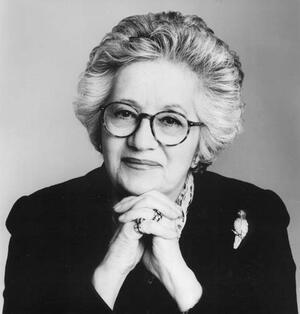Judith Leiber handbags featured in First Lady museum exhibit
When the New-York Historical Society opened its "First Ladies of New York and the Nation" exhibit on March 22, 2005, four handbags created by Judith Leiber were among the unusual items on display.
Born in Hungary on January 11, 1921, Leiber was the first woman to become an apprentice and then master in the Hungarian handbag guild. Having survived World War II in hiding, she met her husband—an American soldier—on the streets of Budapest as the Allies were liberating the city. A GI Bride, she moved to the United States and began working as a pattern maker and later foreman at a handbag company before launching her own company in 1963. Leiber's small firm quickly grew, and she soon opened a factory to produce her designs.
Today, Leiber's handbags, still made in the United States by skilled artisans, are cherished by celebrities and collectors alike. In 1953, throngs of guests and reporters turned out to see the Judith Leiber bag carried by Maimie Eisenhower at her husband's inauguration; every first lady since Nancy Reagan has carried one.
Although she retired from designing handbags in 1998, many of Leiber's most famous lines, including the classic beaded Chatelaine, are still in production. They are among the few luxury goods still made by hand in the United States. The Judith Leiber line has also been extended to include shoes, eyewear, and gloves. Leiber bags have been featured in numerous art exhibitions and are included in the collections of London's Victoria and Albert Museum, New York's Metropolitan Museum of Art, and the Smithsonian Institution in Washington, D.C., among others.
Sources:bushlibrary.tamu.edu/exhibits/2004-fashioning_art/; www.nyhistory.org/web/default.php?section=exhibits_collections&page=exhibit_detail&id=6542122; www.judithleiber.com.



